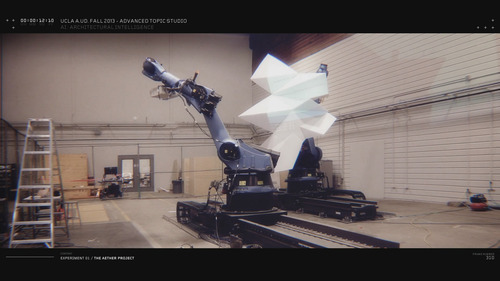Architecture is often concerned with creating immovable spaces. But what if environments could shift with our moods? Click To TweetEver since the first human stacked one brick onto another, architecture has been concerned with creating immovable things. Even with the rise of smart interconnected environments – where lights, heating, doors, and other systems within a building all work together – the physical structures of our buildings remain the same. As a result, the movements and interactions of people within these spaces are shaped by the buildings themselves, like water flowing through a canyon.
This is why architecture and urban design are about more than simply ensuring that our buildings are safe and efficient. Or that they are merely beautiful. Buildings can inspire or isolate, connect or divide, so that debates about everything from the nature of community to the fate of doorknobs have radical social implications. How we live and work every day cuts to the core of what makes us human. But what if buildings could respond to our movements and gestures? What would that change?
Inside the Aether Project
Technology is the story of how humans have embedded mind into matter. Architecture is no exception. Click To TweetThese were the questions asked by a team of students at the UCLA Department of Architecture and Urban Design. Refik Anadol, Raman Mustafa, Julietta Gil, and Farzad Mirshafiei wanted to explore how architecture itself could become smart and responsive. Technology, they say, is the story of how humans have embedded mind into matter – and architecture is no exception.
Using KUKA KR150-2 robots, projection mapping, and motion control, the Aether team created “an immersive interactive environment that gives a glimpse into the near future of artificial intelligence and its effects on human existence in an environment that bridges the physical and the digital.”

Aether begins with Leap Motion interaction. The movements of your hand have the power to transform a robot-controlled surface geometry. At the same time, another robot projects elaborate designs that are synchronized with the physical geometry, creating a choreographed robotic dance. The patterns that course along the surface are constantly shifting. Geometry, depth, shadow, and color – all rise and fall as the pattern changes.
Interaction as design medium
What does this have to do with architecture? With the growing use of robots and smart hardware, architects will have a lot more freedom in how they design the world around us. The Aether Project shows how a physical structure can be transformed through interaction, and takes it a step further by creating designs that can be layered on top of that structure. Interaction becomes a physical design medium, just like it already has for the digital world.
We’ve just scratched the surface of the ideas behind The Aether Project, which include thoughts on the nature of consciousness, artificial intelligence, and how human behavior might factor into the blueprints of the future. Check out the extended version of this post on our developer blog, including a Q&A with the creators. (For more interactive art with big ideas, you might want also to visit the digital forests of Growth or the stark beauty of Ascension.)
We’d love to hear what you think. Where will this desire to implant our consciousness within machines take us? And how will we interact with machines in the future?
